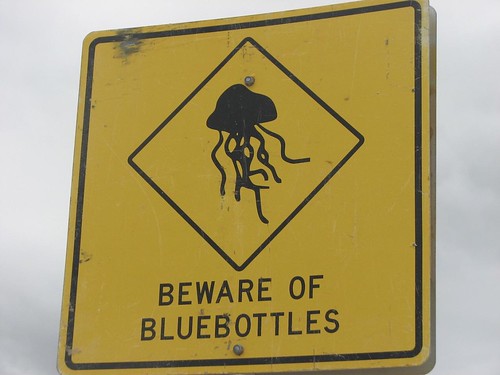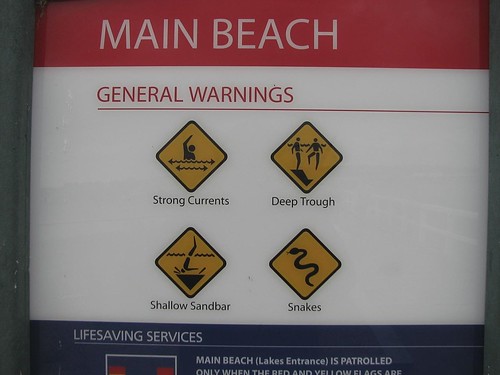If It Doesn’t Kill You
A friend tells this story.
On her honeymoon, she was snorkeling with her new husband along the Great Barrier Reef. Something in the water stung her, but she didn’t see what it was.
She swam back to the boat and told the captain what had happened. He said: “Not much we can do about it. Why don’t you climb in the boat and have a beer. In about half an hour we’ll know whether or not you were stung by something deadly.”
So understated. So Australian.
Here is an unavoidable fact: There are more things on the Australian continent that can kill you than anywhere else on earth.
There are the big obvious things, like crocodiles. Seems every year at least one unfortunate tourist does something stupid and gets himself (or herself) eaten.
Not going to crocodile territory? Don’t get complacent. There are dozens of other things that can kill you, things that you never see coming.
Consider the female red-backed funnel web spider. If a bite is not quickly treated with anti-venom, the likely result is a very painful death — or worse.
During a visit to the the Australian Museum, we got a glimpse at the immense pride Australians feel living in such a dangerous place.
The museum had a very helpful exhibit describing the country’s most dangerous creatures, along with useful tips should you have a “unpleasant” interaction with one of them.
For example, if you were to get bitten by a Great White Shark, here is what you should expect:
You will have extreme pain from the wounds and may be bleeding profusely. You will exhibit symptoms of blood loss, such as pale, clammy skin, a rapid weak pulse, rapid respiration, and you may lose consciousness.”
The shark is at one end of the deadly creatures spectrum. But what of the lowly ant? If you were unfortunate enough to be bitten by a Jack Jumper Ant, here is what to expect:
The pain will last for five minutes or more. The area may swell, and aching or itchiness may persist for days. If you have an allergy to them, the swelling may spread, and you may have difficulty breathing. Death may follow.”
After reading all the warnings and listening to a few locals talk about their run-ins with dangerous animals, insects, snakes and sea creatures, I suppose we will be lucky to escape Australia with our lives.
Just keep that ant away from me.





2 comments
One minute I am reading a postcard from Thailand, the next , it sounds like you are still in Australia. You people sure do get around. We miss you in Portland Oregon, USA.
Oh dear. People always seem to freak out about Australian wildlife! 🙂
Nobody has died from a redback spider in a long, long time. My understanding is that it’s not incredibly painful either (my mother has been bitten by one). It hurts, sure. I think there are far more painful things though! (And I HATE spiders!) Great White Sharks, well, you can get them virtually anywhere in the southern seas of the world. They’re not restricted to Australia.
As for dying from a Jack Jumper Ant – you’ll notice that’s if you’re allergic and have an anaphylactic reaction. People die from peanuts for the same reason 😛 Thanks for the link though – I think that’s the ant I’m allergic to (well, some sort of bull ant). No anaphylactic reactions though, just swelling 🙂
Australian animals really aren’t that bad – what about your bears and coyotes and jaguars and wolves and snakes and spiders and sharks?? 😛 😉